Review of the best according to the editorial board. On the selection criteria. This material is subjective and does not constitute advertising and does not serve as a purchase guide. Before buying, you need to consult with a specialist.
Badges from the times of the Soviet Union are great collectibles. The communist government was very fond of this method of encouragement, so such commemorative awards were presented to citizens for a variety of achievements – from personal to production. At one time, this even gave rise to a huge number of jokes, including quite poisonous ones.
But now Soviet badges are an even more interesting collectible than 30-40 years ago. Faleristas – and this is the name of the people who collect these awards – are ready to give large sums for especially rare and unusual symbols. As a result, before you send a collection of grandfather's or grandmother's badges to the trash, it is worth looking – what if you can get very good money for them?
For those who want to do faleristics or hope that the collection found on the mezzanine can be converted into a completely liquid currency, we have compiled a rating of the 10 most expensive pins of the USSR.
- Rating of the most expensive pins of the USSR _
- 10th place: 'Excellence in Food Industry NKPP', 1937-1939, 40,000 rubles
- 9th place: 'About the end of the VMFAK, type 1', 1952-1957, 50,000 rubles.
- 8th place: 'Badge of the Letnab and Navigator of the Military Aviation Schools of the Red Army Air Force', 1938, 55,000 rubles.
- 7th place: 'Trade Union of Railway Transport Workers', 1926, 56,000 rubles.
- 6th place: 'Badge of the Higher Engineering and Technical School of the Commanding Staff of the Red Army', 1919-1921, 90,000 rubles.
- 5th place: 'Excellence in Socialist Competition', 1944, 95,000 rubles.
- 4th place: 'Honored Test Pilot of the USSR', 1959, 125,000 rubles.
- 3rd place: 'Dobrolet', 1923-1927, 150,000 rubles
- 2nd place: 'Excellent worker of the Mossovet farm', 1940, 500,000 rubles.
- 1st place: 'For the industrialization of the country!', 1929, 600,000 rubles
Rating of the most expensive pins of the USSR _
| Nomination | a place | Name of product | price |
| Rating of the most expensive pins of the USSR _ | 10 | 'Excellence in food industry NKPP', 1937-1939 | RUB 40,000 |
| 9 | 'About the end of the VMFAK, type 1', 1952-1957 | RUB 50,000 | |
| 8 | 'Badge of Letnab and Navigator of Military Aviation Schools of the Red Army Air Force', 1938 | RUB 55,000 | |
| 7 | 'Union of Railway Workers', 1926 | RUB 56,000 | |
| 6 | 'Badge of the Higher Engineering and Technical School of the Commander of the Red Army', 1919-1921 | RUB 90,000 | |
| 5 | 'Excellence in Socialist Competition', 1944 | RUB 95,000 | |
| 4 | 'Honored Test Pilot of the USSR', 1959 | RUB 125,000 | |
| 3 | 'Dobrolet', 1923-1927 | RUB 150,000 | |
| 2 | 'Excellent worker of the economy of the Mossovet', 1940 | RUB 500,000 | |
| 1 | 'For the industrialization of the country!', 1929 | RUB 600,000 |
10th place: 'Excellence in Food Industry NKPP', 1937-1939, 40,000 rubles
Rating: 4.1
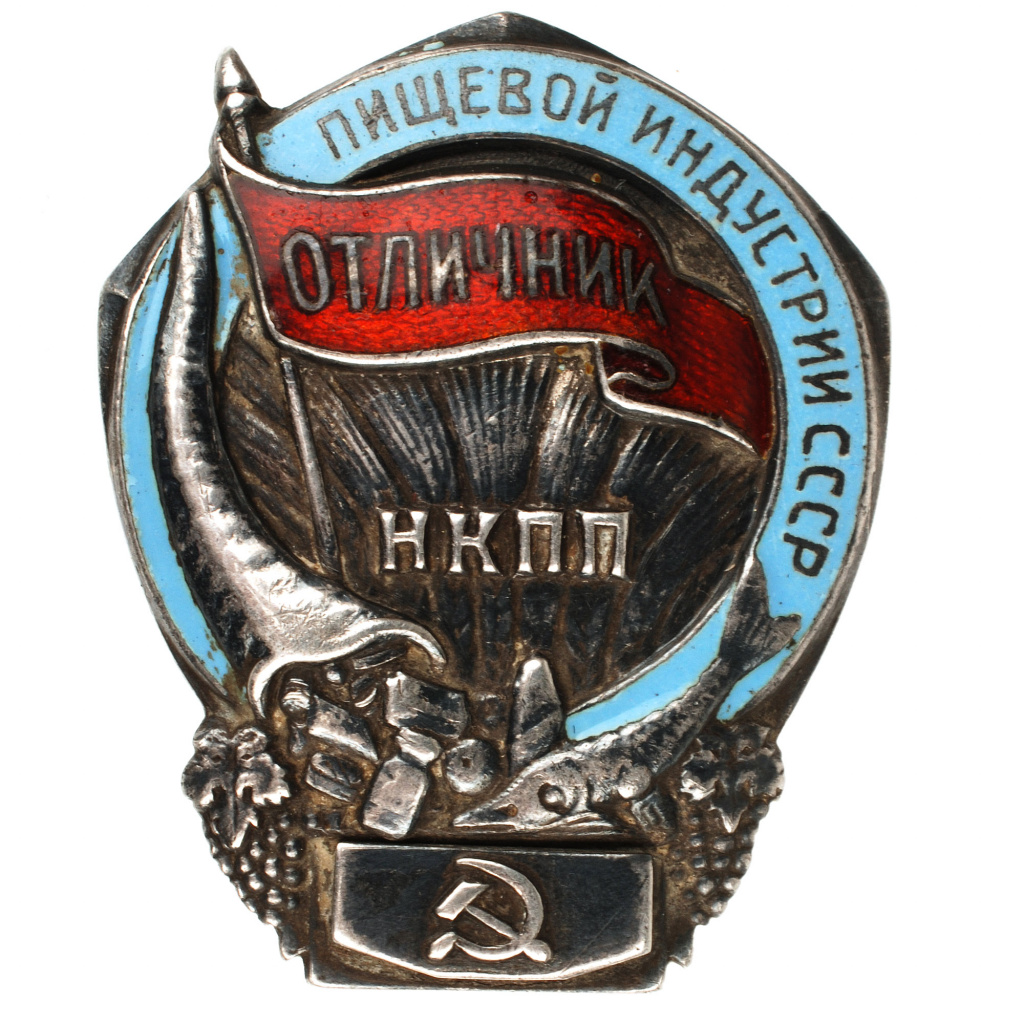
In 1937, the USSR People's Commissariat for Food Industry ('People's Committee of the Food Industry') instituted a commemorative badge that was given to the most interesting distinguished employees of enterprises involved in the production of food. This commemorative award was made of 14 grams of silver, covered with enamel and fixed on the chest with a screw.
The badge, like many other awards of the period, has an irregular pentagonal shape. It depicts a blue circle, a beautiful Soviet flag, as well as symbols that indicate belonging to the food industry – wheat ears, fish, grapes, food and a cornucopia.
The exact circulation of this commemorative award is unknown. At the same time, each of them has a unique number stamped on the back. Among the icons presented at auctions at the time of this writing, you can find copies that are numbered in the range of up to 1,000. Since these 'souvenirs' were issued before the Great Patriotic War, it can be very difficult to find them now – and even if preserved in perfect condition, it is almost impossible.
9th place: 'About the end of the VMFAK, type 1', 1952-1957, 50,000 rubles.
Rating: 4.2
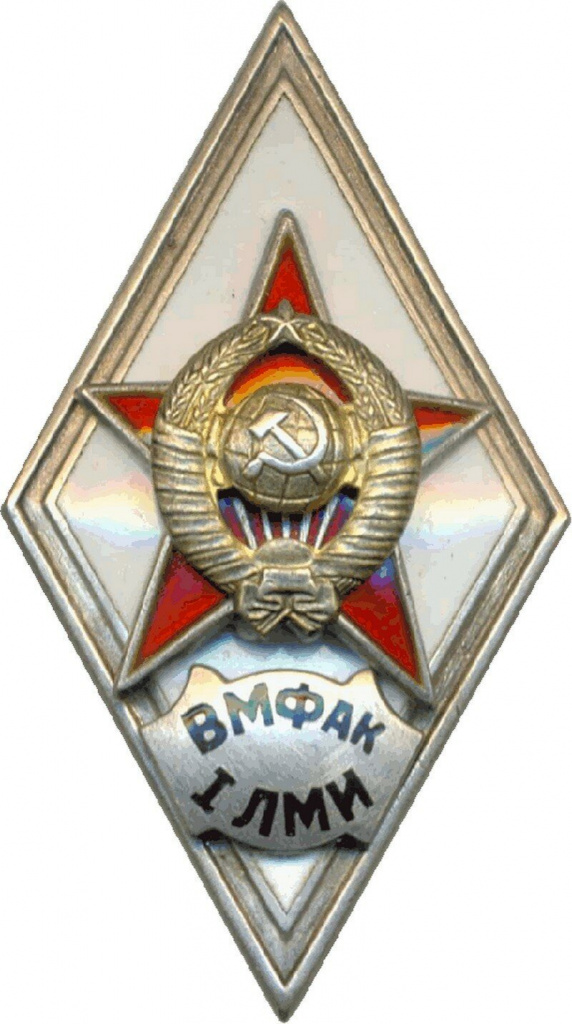
The full name of this badge is impressive – 'For graduating from the naval faculty of the 1st Leningrad Medical Institute named after V.I. I.P. Pavlova '. Therefore, in the catalogs it is mentioned by the abbreviation stamped right on the front side – 'VMFAK 1LMI'.
The 16-gram silver badge, covered with multi-colored enamel and having a rhombic shape characteristic of the Middle Soviet period, was issued in the period from 1952 to 1957. Actually, exactly as long as this faculty existed. It was difficult to call it in demand among students, there were not so many graduates, and there were even fewer among them who retained commemorative awards.
However, there are several types of these commemorative awards at once. The first one is of greatest interest due to its rarity. It was equipped with a screw fastening, and the bolt was soldered to the shield. For some unknown reason, the signs of the first type are very rare, but the second, with the fastening 'sewn' into the rhombus, is a little more often – it is true, and they cost half the price, even those that are preserved in good condition.
8th place: 'Badge of the Letnab and Navigator of the Military Aviation Schools of the Red Army Air Force', 1938, 55,000 rubles.
Rating: 4.3
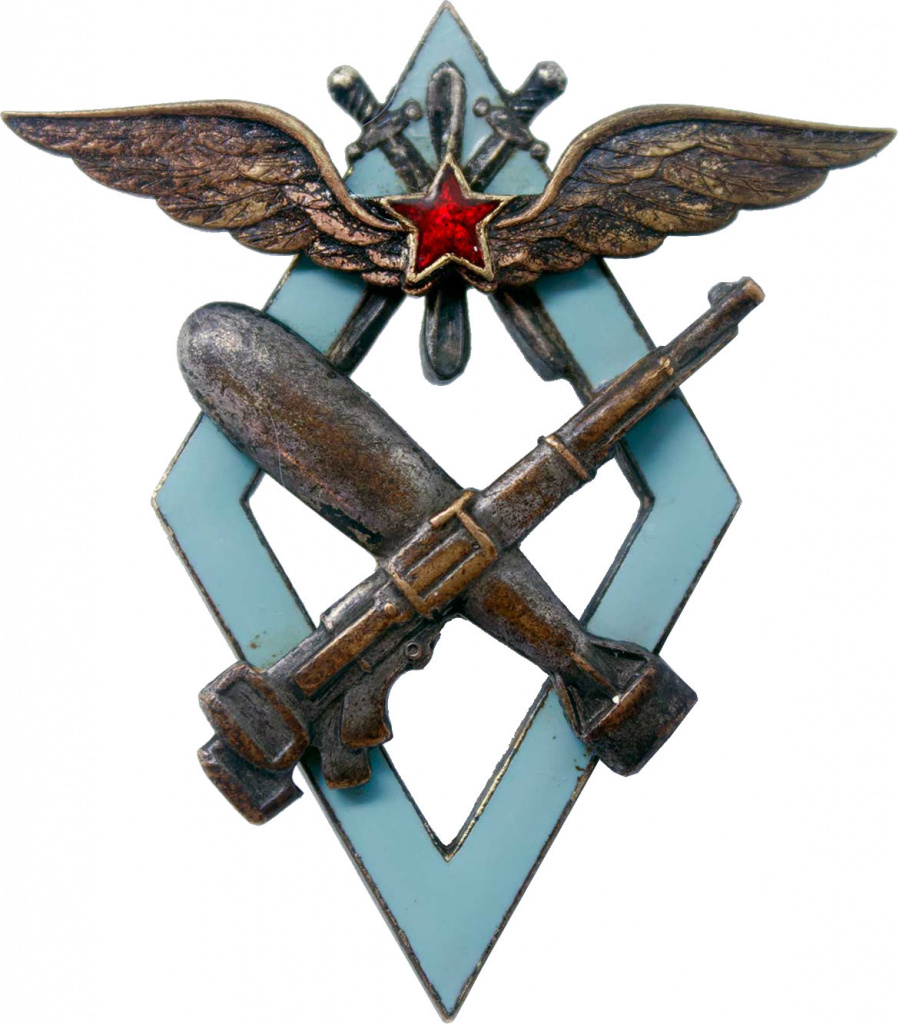
One of the rarest and therefore most expensive Soviet badges of the pre-war period. It is carried out in the traditional direction (distinctive symbols) design – that is, it has a diamond shape. True, the shape of the flap itself is far from standard.
Structurally, the badge is a hollow rhombus made of silver alloy, covered with blue enamel. It depicts the symbol of the air force of the Workers 'and Peasants' Red Army – crossed swords with a propeller screw, wings and a red five-pointed star. A distinctive feature is the image of a rifle and an aircraft bomb, which demonstrate the high military status of the owner.
The badge was issued to non-military combat aviation specialists. Graduates of schools who showed great skill in mastering the profession of an observation pilot (in fact, a reconnaissance who determines the situation from the air) and navigator (a specialist in laying routes and calculating coordinates) could apply for it. The badges were issued for only one year, which makes them rare and, as a consequence, expensive.
7th place: 'Trade Union of Railway Transport Workers', 1926, 56,000 rubles.
Rating: 4.4
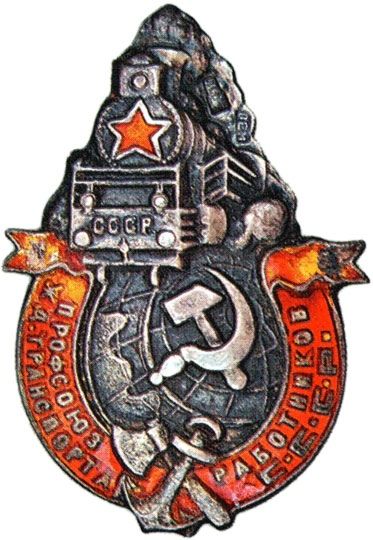
One of the rarest trade union badges. True, it should be noted right away that such a high price is presented only for well-preserved options. Excavated (the so-called 'kopanina'), with abrasions and traces of oxidation, are not of particular interest to phalerists.
This symbol of distinction was established at the VIII Congress of Railway Workers' Trade Unions. It was made either from silver or from bronze coated with this noble metal. The badge is quite large, it is 40 millimeters high. The upper part of the symbol depicts a steam locomotive painted in green and black with a red five-pointed star, in the lower part there is a globe and a crossed ax and anchor.
As the name implies, only the most active workers of trade unions of specialists of railway transport could apply for these badges. The award was issued until 1934. Includes screw fixing.
There are two versions of the icon. Only silver and bronze are expensive. Later, due to the high cost of production and the large number of railway transport workers, they began to issue awards from tombak and even without enamel coating. They are somewhat cheaper.
6th place: 'Badge of the Higher Engineering and Technical School of the Commanding Staff of the Red Army', 1919-1921, 90,000 rubles.
Rating: 4.5
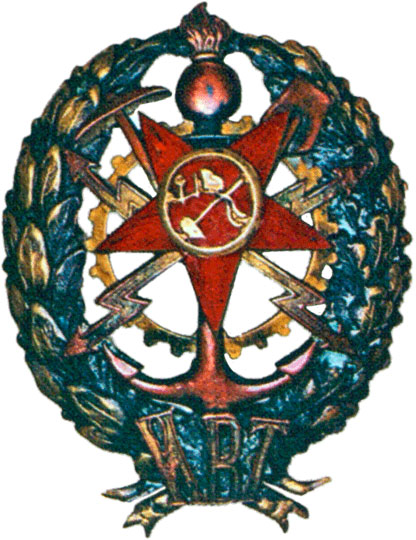
The 'Badge of the Higher Engineering and Technical School of the Red Army Commanders' is one of the first excellent badges that appeared during the Soviet Union. Its first edition was established in 1919 – quite after the formation of the USSR as a state.
There are several options. But most of those that have survived to our time are issued to students who graduated from the electrical engineering direction. The symbol was made of bronze and covered with multi-colored enamel. It was supposed to use a screw for fastening.
This badge is one of the most massive ones presented. It weighs over 27 grams! The symbol depicts an irregular hexagon inscribed in a laurel crown unusual for the symbols of the USSR, a red enamel star and a sign characteristic of engineers – a crossed plow and hammer. Some of the surviving copies were made with an admixture of silver.
The most valuable are the badges of the very first edition. Their main feature is that the red star is depicted inverted, there are crossed lightning bolts and a sea anchor. In the lower part, the letters 'IVT' are printed – the name of the educational institution that issued the distinction symbols.
5th place: 'Excellence in Socialist Competition', 1944, 95,000 rubles.
Rating: 4.6
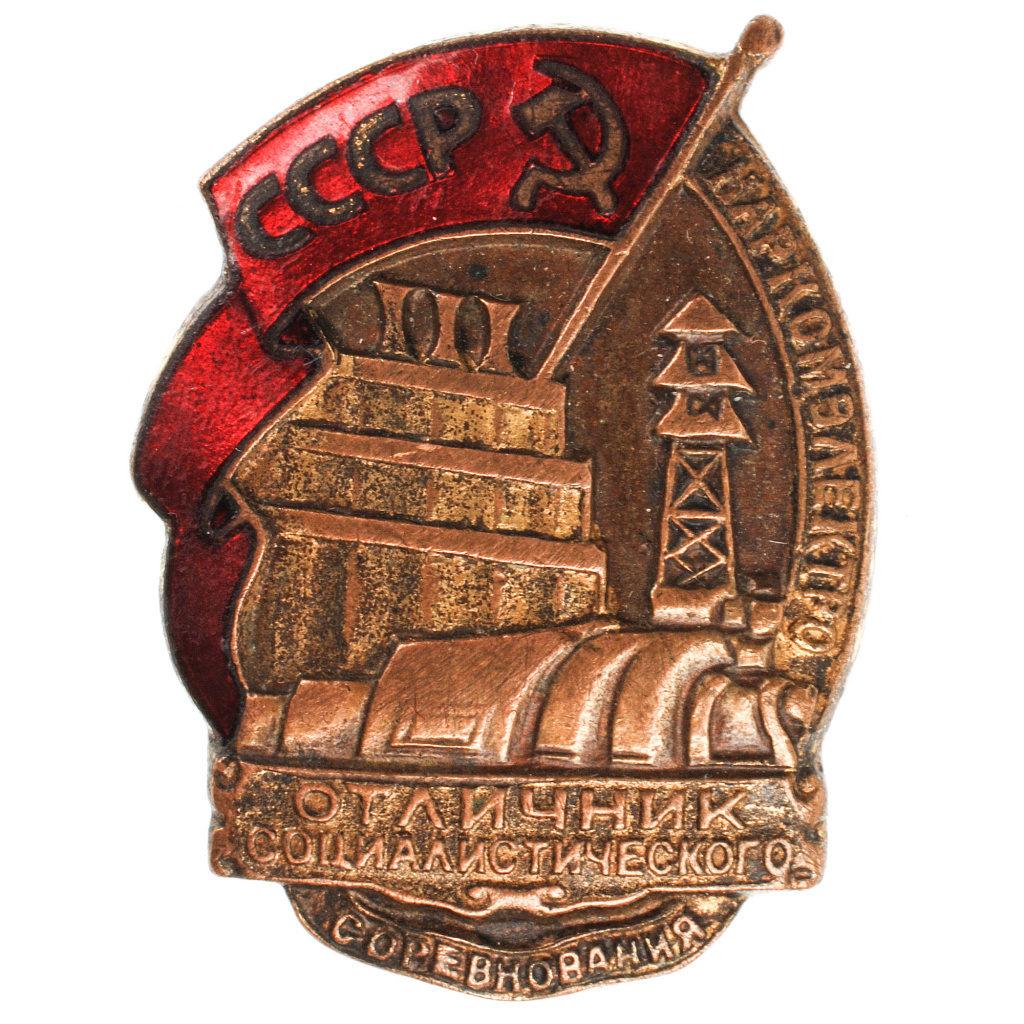
After the formation of the Soviet Union as a state, socialist competitions were launched in many industrial sectors. Their task was to increase the volume of output by enterprises in order to accelerate industrialization and improve the overall quality of life. The winners of socialist competitions were given both material and moral incentives.
This icon is among the latter. In 1944, socialist competition covered most of the areas of production, including the oil, aviation, military, iron ore, railway, medium and cotton industries. Each of them issued their own badges, printed directly by the Leningrad Mint (which is also displayed on the reverse of the award with the symbol 'MD').
Coal industry badges are the highest valued due to their rarity. But the cheapest are the symbols issued by the People's Commissariat for Food Industry. The value is also determined by the safety – the higher it is, the more money you can get for the badge at the auction. It is worth remembering that many of them are nominal.
4th place: 'Honored Test Pilot of the USSR', 1959, 125,000 rubles.
Rating: 4.7
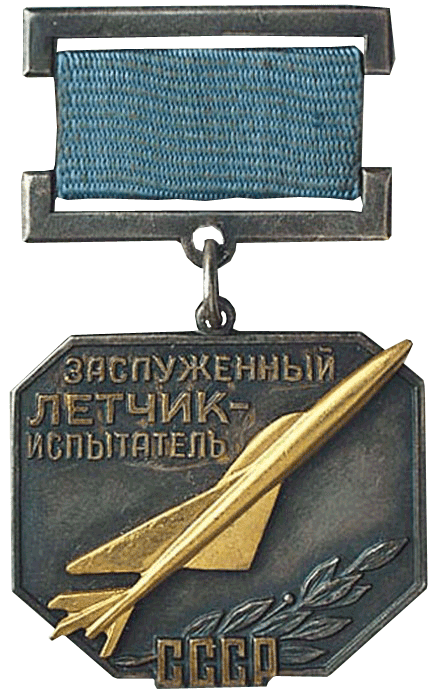
In 1959, by decree of the Ministry of Defense of the USSR, the honorary title 'Honored Test Pilot of the USSR' was established, with the assignment of which a corresponding badge was issued. It was supposed to be worn on the jacket on the right, over orders and medals. The first holders of this title were 10 people, then, during the year, another 12 pilots were awarded the award. Among them was Nina Ivanovna Rusakova – the only woman to have the mark.
In the future, these titles were issued every year – until the very collapse of the Union. But the badges issued to the first cavaliers, that is, in 1959, have the greatest phaleristic value. There are only 23 of them, as mentioned above.
The insignia of the first batch were made at the Moscow Mint. Silver was used as the main material, and an additional cover in the form of a supersonic aircraft taking off was made of pure gold. True, the following year, badges began to be made of less valuable metals. Silver was replaced by an alloy called nickel silver, and gold was replaced by tombac.
Each icon has its own serial number. Therefore, even now, using catalogs and archival documents, it is possible to identify the owner of this award.
3rd place: 'Dobrolet', 1923-1927, 150,000 rubles
Rating: 4.8

In 1923, an air transport organization called Dobrolet was founded in the Soviet Union. She was represented by pilots who are part of the volunteer air force. Dobrolet's goal was to develop civil airlines specializing in the transportation of passengers and cargo.
“Dobrolet”, according to unofficial historical information, was founded by the highest political ranks and artists of the USSR. Trotsky himself stood at the origins of the society – one of the main organizers of the October Revolution and the founders of the Red Army. The Dobrolet emblem, rendered directly on the badge, was created by the avant-garde artist Kazimir Malevich. In addition, the first posters urging citizens to invest in this society were painted by Alexander Rodchenko, the pioneer of advertising and design in the Soviet Union.
True, despite such a large-scale start, Dobrolet lasted only 7 years. Already in 1930, the government founded the All-Union Association of the Civil Air Fleet, which included the rest of the civil air transport organizations (including Zakavia and Ukrvozduhput).
Throughout its existence, Dobrolet has produced badges showing the employees' belonging to this society. The most valuable are those released in the first generation – copper color. The rest were already blue, stamped in an unknown workshop and therefore are relatively inexpensive.
2nd place: 'Excellent worker of the Mossovet farm', 1940, 500,000 rubles.
Rating: 4.9
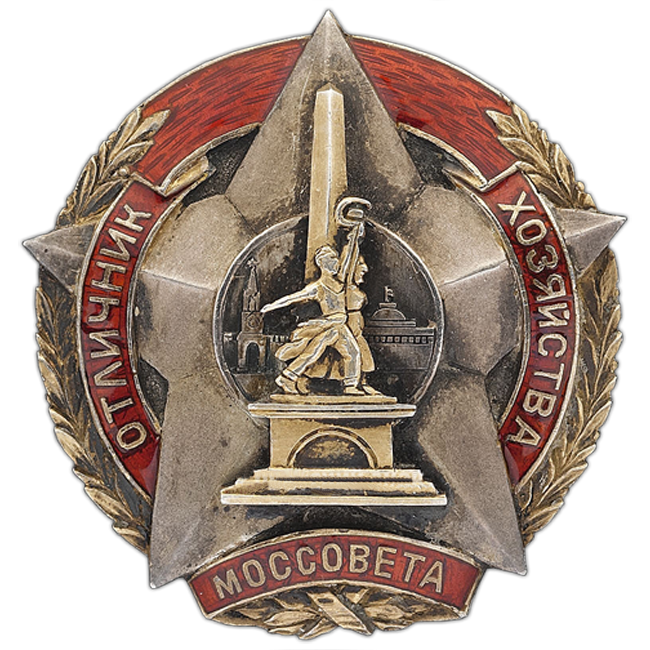
In 1940, it was decided to introduce a new award, which would be given to specialists in the city and communal services. They even printed the first test batch. For this commemorative badge, the most modern technologies were used, including oxidation, designed to maintain an attractive appearance for a long time.
The badge itself was imprinted in silver. After that, it was covered with multi-colored enamel and an additional layer of gilding. Therefore, it is also visually beautiful. The award depicts the symbols of the peaceful industrialization of the country – the Worker and the Collective Farm Woman – standing against the background of the Moscow Kremlin.
The badges were planned to be presented in 1941. However, the award did not happen – the government's plans were interrupted by the war. Therefore, the final batch was never printed, only a few trial copies remained. All currently known ones are in museums and private collections, so it is almost impossible to find this badge at auction.
1st place: 'For the industrialization of the country!', 1929, 600,000 rubles
Rating: 5.0

Soon after the formation of the USSR as a state and the end of the civil war, the country's government introduced a plan to restore and improve production facilities. He meant not only the legendary 'five-year plans', but also commemorative awards for outstanding workers.
The awards themselves were of several 'tiers'. There were local, regional, and industry awards. But the highest and therefore especially desirable for many production leaders was the badge “For the industrialization of the country!” This award was of very high importance, so it was not given to everyone. There were so few applicants for it that only a few copies of these badges have survived to this day.
And because of their rarity, they also retain a high value. Only now in monetary terms. “For the industrialization of the country!” – this is the most expensive badge of the USSR. It is, however, almost impossible to buy 'just like that'. Almost all the surviving copies are in museums and private collections, and the figure of 600,000 rubles is the amount for which it was sold at the last auction.
Attention! This rating is subjective and does not constitute an advertisement and does not serve as a purchase guide. Before buying, you need to consult with a specialist.








